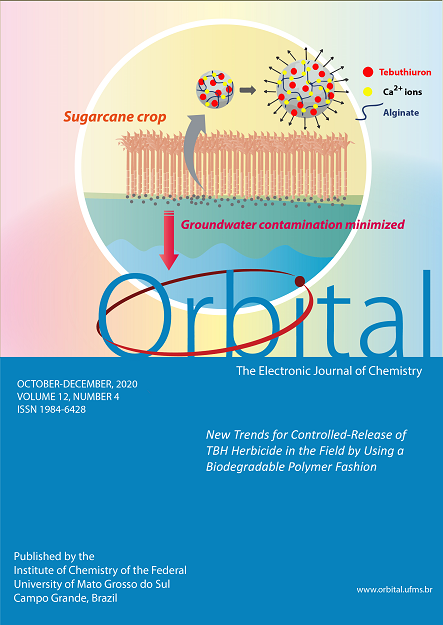Sustainable Synthesis of Novel Arylamide L-Cysteine Methyl Esters Peptidomimetic Derivatives: Inhibitors of Serine and Cysteine-like Proteases
- arylamides,
- peptidomimetics,
- coupling reactions,
- green solvents,
- protease inhibitors
Copyright (c) 2020 Orbital: The Electronic Journal of Chemistry

This work is licensed under a Creative Commons Attribution-NonCommercial-NoDerivatives 4.0 International License.
Abstract
The development of new protease inhibitors is always expanding for active therapies against diseases caused by pathogenic microorganisms that rely on proteases for replication and vital functions. This work aimed to synthesize new peptidomimetics arylamides, endeavoring to provide these compounds with the capacity to inhibit mainly cysteine and serine-like proteases. The effectiveness of COMU as coupling reagent, under classical and sustainable approaches, were evaluated. The results confirmed that the use of dichloromethane and the classical methodology is efficient for new amide bond formation in terms of yield. Although, the use of dimethyl carbonate and the microwave-assisted methodology proved competitive performance and can be used as an alternative route due to its environmentally friendly approach (green solvent and energy efficiency). In vitro screening assays attested that the proposed compounds have inhibitory activity for papain (IC50 between 5.56±0.21 μM and 18.50±0.69 μM) and β-trypsin (IC50 between 250±12 μM and 1410±30 μM). The compounds 1a and 1e were noteworthy with IC50 values of 5.56±0.21 μM and 7.06±0.33 μM for papain and 540±10 μM and 250±12 μM for β-trypsin, respectively.

